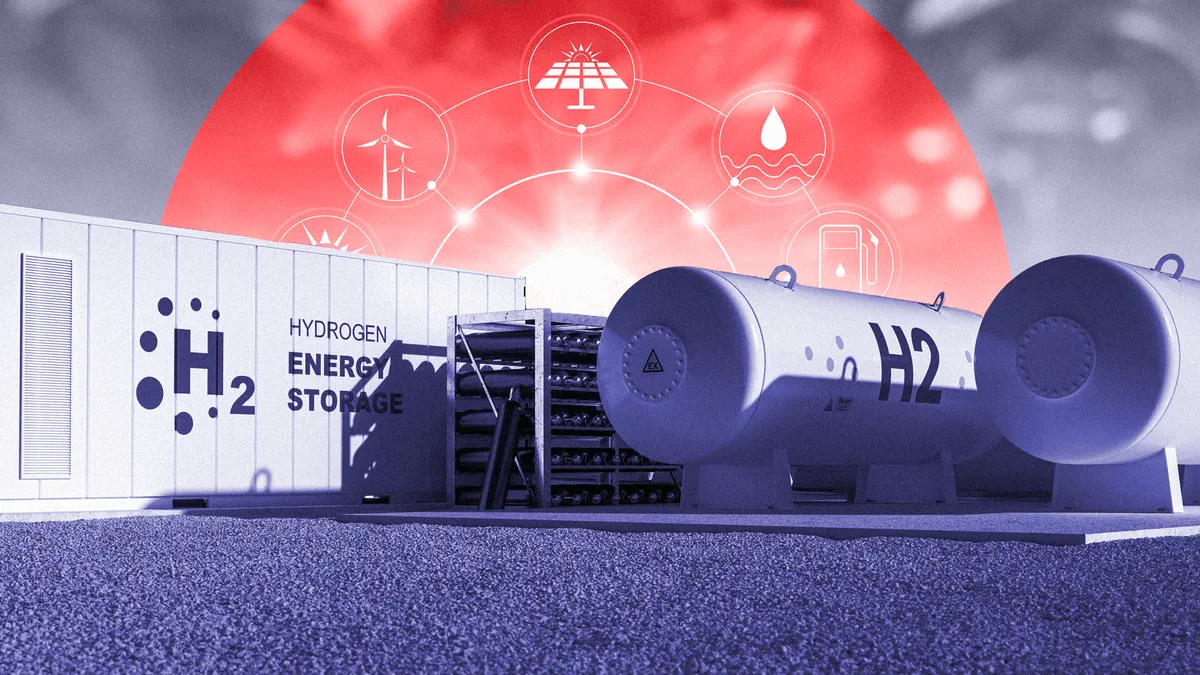Dive Brief:
- President and CEO Robert Frenzel highlighted Xcel's work on hydrogen, among other issues, on Thursday during the company's Q3 2021 earnings call.
- Frenzel said Xcel has updated its base investment plan, "reflecting $26 billion of capital expenditures over the next five years." However, the latest base plan "does not include any capital for green hydrogen production for our [local distribution company] or generation needs, which we believe could be material over the balance of the decade," Frenzel added.
- The Department of Energy awarded Xcel $10 million last year to test the production of hydrogen via high temperature steam electrolysis at the company's Prairie Island nuclear plant in Minnesota. FirstEnergy, Exelon and Arizona Public Service have also been selected to test hydrogen production approaches at nuclear power plants.
Dive Insight:
Xcel expects the hydrogen-related work at its Prairie Island nuclear plant to begin in 2023 or early 2024.
"Xcel has long been a leader in renewable energy, and we think the next stage of environmental investment is going be developing hydrogen on a large scale," Morningstar analyst Travis Miller told the Minneapolis Star Tribune.
During Thursday's call, Frenzel briefly detailed Xcel's work on hydrogen and its support for a related federal tax credit, which was included in the latest House version of the budget reconciliation package. In addition to the Prairie Island project, Frenzel said Xcel "is exploring five to eight additional greenfield and brownfield projects." But he did not provide details on those additional projects.
"And with favorable state backdrops in Minnesota and in Colorado, which have passed clean fuel legislation as well as a potential for a federal hydrogen production tax credit, we believe that our favorable renewable generation conditions will help us push beyond pilots and into green hydrogen production resources that can be valuable to a clean energy future," he continued.
With its hydrogen projects, Xcel joins an expanding group of utilities, including NextEra Energy, that are working on the emerging resource.
Looking more broadly, Frenzel said Xcel's resource plans will add nearly 10,000 MW to its system and attain 85% carbon reduction by 2030. "We expect decisions on both the Minnesota and the Colorado resource plans in the first quarter of next year," he said.
Frenzel further noted the potential benefits of proposed changes to tax credits for wind and solar projects as well as the proposed credit for green hydrogen, or hydrogen produced from clean energy generation.
"Proposed tax credit expenses for [investment tax credits] and [production tax credits], including the solar production tax credit, will make future projects even more competitive, providing additional benefit to our customers," Frenzel said.
"A PTC for green hydrogen would also bring significant value and technology advancement and costs. It could help accelerate the time frame in which we could begin incorporating hydrogen into power generation and into our natural gas distribution operations at a cost that's more economic for our customers," he continued.
While noting Xcel's target of being carbon-free by 2050, Frenzel said more needed to be done to reach that goal.
"We need to identify that next generation of generation," he said. "I think what we need is another type of emissions-free generation. And I think the infrastructure bill triples DOE funding for research and development. I think that's critical for the industry to progress past where we expect to be, which is about an 80%, 85% carbon reduction by the end of the decade."
Xcel reported third quarter earnings of $609 million or $1.13 per share compared with $603 million or $1.14 per share in the year-ago period. The results were short of analysts' average expectation of $1.18 per share.
"On a year-to-date basis, our earnings are $0.13 per share ahead of last year," Executive Vice President and Chief Financial Officer Brian Van Abel said during Thursday's call.
"We remain confident we can deliver long-term earnings and dividend growth within the upper half of our 5% to 7% objective range as we continue leading the clean energy transition and keeping bills low for our customers," Abel continued.















